By: Robert Tate
Photos courtesy of the National Automotive History Collection and Robert Tate's collection
Posted: 01.19.2016
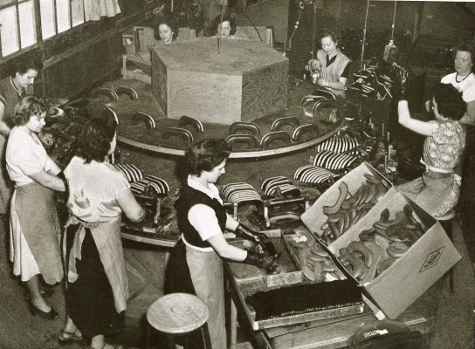
The groundwork for the Briggs Manufacturing Co. was laid with Walter O. Briggs, a locomotive engineer who was born not far from Detroit in Ypsilanti, Mich., on Feb. 27, 1877.
Mr. Briggs worked at the Michigan Central Railroad Company in Detroit. During the early days, Detroit was beginning to write its own chapter for the history books by becoming the automotive capital of the world.
Briggs himself started out in the manufacturing business in 1909. His small enterprise at the time grew into one of the largest independent manufacturing companies of automobile bodies in the world having introduced the world to the closed body design.
Mary Humphrey, reporter for “Detroit Saturday Night,” once said, “If Walter Briggs never had done anything in his life but to educate motor car manufacturers to the wisdom and practicability of the closed body cars, he would have made one of the great contributions to industry.
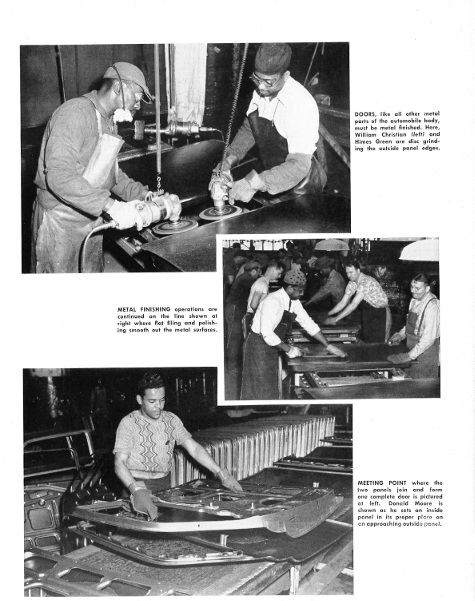
This story is dedicated to the men and women who were factory employees, and who helped to make and assemble parts for the automotive industry. They also, helped to create the American dream.
The Briggs Manufacturing plants were located in Cincinnati, Evansville and in Detroit on Conner Avenue, along Meldrum and in Hamtramck. Other buildings were located at Outer Drive and the Eight Mile road area location as well. Many other plants were also based throughout the United States.
During the manufacturing process within the trim department, female employees operated many sewing machines for the assembly of automotive interior upholsteries. More than 700 sewing machines and cloth cutting machines of various kinds were operating at the Vernor plant location. Briggs Manufacturing also made Beautyware products for the home, which included bathtubs along with plumbing fixtures and brass products.
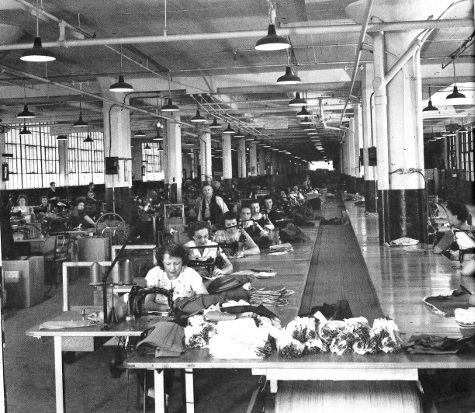
Many of the Briggs factory workers worked long hours to assemble all of these great products. During the war, Briggs Manufacturing was a major defense producer of aircraft parts which included the B-29 Superfortress and the KC-97 Stratofreighter tanker aircraft. The men and women at Briggs worked side-by-side to help with their efforts to help provide for the war-time challenges.
Female employees, who were trained by Briggs, also performed a large percentage of the work that was required to make 75 mm cartridge cases. The Briggs company was so efficient in making aircraft components that the Conner Ave. plant was given the Army-Navy “E” award for war production achievement in September of 1942.
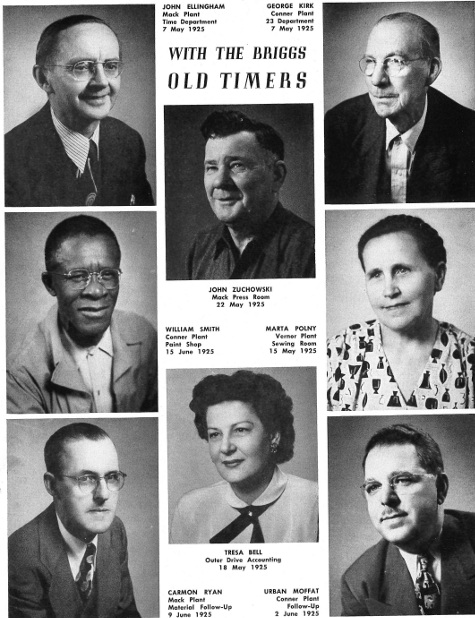
After the war ended, many factory workers returned to making automobile bodies and component parts along with Briggs’ other products such as Beautyware, plumbing fixtures and decorative plastic panels and moldings.
From 1947 through the early 1950s, Briggs factory workers saw a wage boost for hourly employees. In 1947, the company invested more than $6 million in new facilities and tools for its employees. The UAW-CIO was also involved with the training aspects within the company in 14 different skills and trade jobs under a program called “Earn as you learn.” This program was offered to many Briggs employees who would later forge their own successful chapters in the automotive industry .
In 1952, Walter O. Briggs passed away and the company was suddenly headed in a different direction. When Briggs Manufacturing first got started in the auto industry early days, the first contracts were for painting and trimming bodies for Hudson and Ford and making touring car tops and trims for Hudson.
On the death of Walter O. Briggs, Henry Ford II said, “The death of Walter O. Briggs will be felt by all of us because of his many and varied civic business and social activities. Mr. Briggs association with my family goes back to the days when my grandfather operated the Highland Park Plant. Mr. Briggs then made bodies for the Model T. His death marks the passing of another of Detroit's great men and the passing of an era in the auto industry.”
On December 29, 1953, the Chrysler Corporation purchased the entire body operations for $35 million. Later Chrysler would take control of all of the buildings and plants. Mr. Briggs, had made his dream come true, however it was also the men and women factory employees who helped to put America on wheels. On a historical note, Walter O. Briggs, at one time was also the owner of the Detroit Tigers and the stadium.
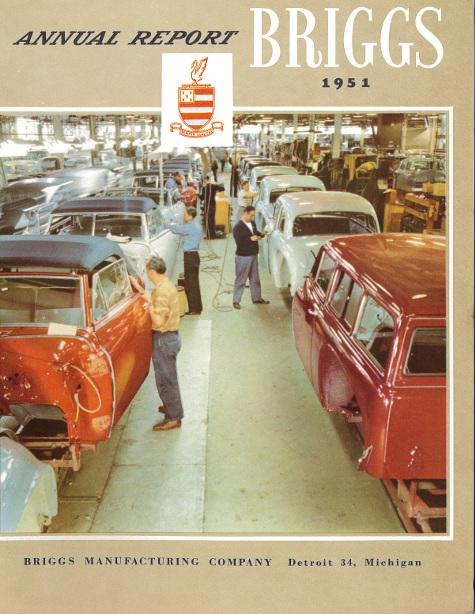
A special thanks to Robert Tate, Automotive Historian and Researcher, for contributing this story to the MotorCities Story of the Week Program. (Bibliography: Thompson, A. Kenneth. “Business Industry,” Detroit Free Press January 16, 1963; Briggs In War Production Annual Report December 31, 1942; The Briggs Assembler “Walter O. Briggs 1877-1952,” February 1952; Briggs Manufacturing Company. Detroit 34, Michigan 1951.)
For further information on photos please visit http://www.detroitpubliclibrary.org/ or email This email address is being protected from spambots. You need JavaScript enabled to view it.. Please do not republish the story and/or photographs without permission of MotorCities National Heritage Area.
If you would like to contribute an article for the MotorCities newsletter, email This email address is being protected from spambots. You need JavaScript enabled to view it. or call 313-259-3425.



